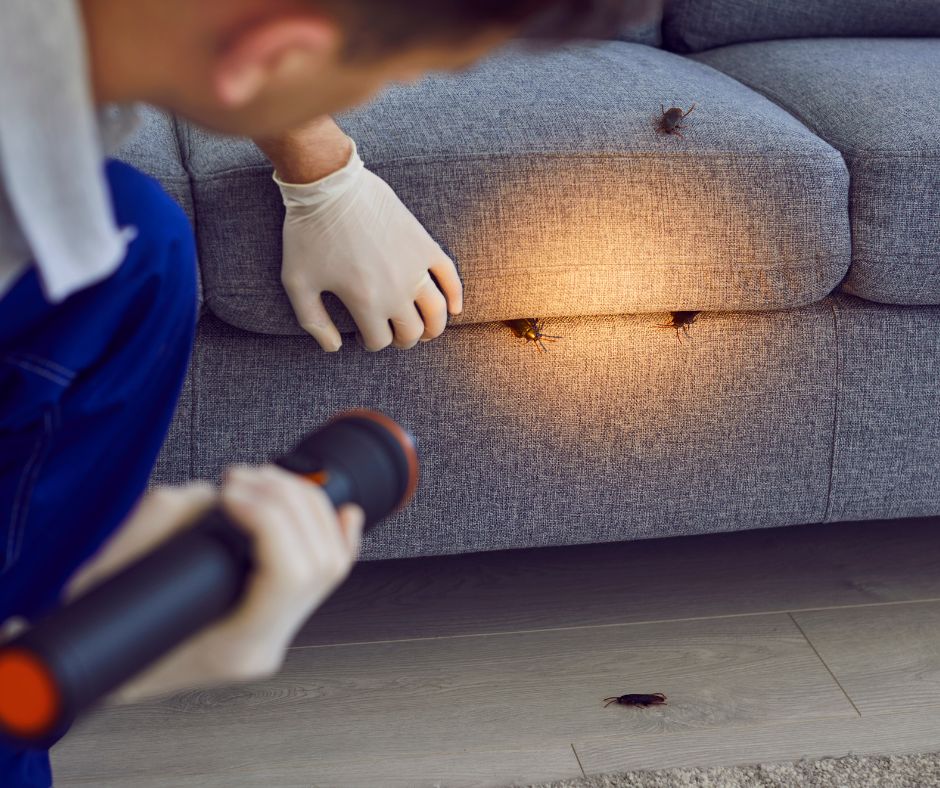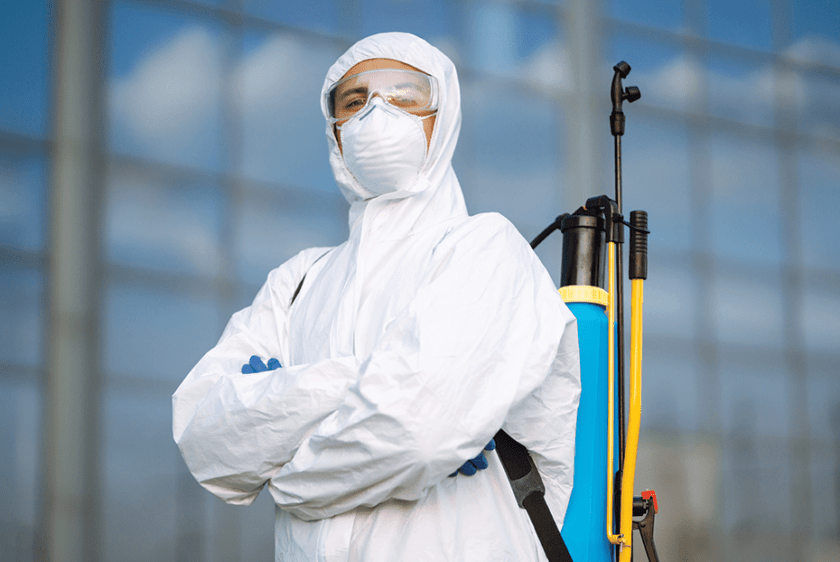Fast and Reliable Bed Bug Exterminator Port Charlotte Services for Stress-Free Living
Discover the most recent Advancements in Insect Control and Exactly How to Carry Out Efficient Therapy Solutions
In the last few years, the area of pest control has witnessed substantial advancements, driven by the need for sustainable and efficient therapy options. Cutting-edge strategies such as Integrated Parasite Monitoring (IPM) combine green experiment sophisticated modern technology, boosting both effectiveness and ecological responsibility. Additionally, the integration of smart innovations and DIY approaches has equipped individuals to deal with parasite problems better. As we check out these advancements, it comes to be necessary to comprehend exactly how ideal to apply these approaches in various settings to achieve optimal outcomes. The effects for insect management practices might be transformative.
Eco-Friendly Bug Control Options
In recent times, the demand for environmentally friendly bug control alternatives has actually risen as homeowners and services alike seek lasting choices to typical chemical treatments. This shift is driven by expanding ecological awareness and a wish to minimize the health risks related to artificial chemicals.

Green parasite control methods encompass a variety of approaches that prioritize using natural materials and techniques. Integrated Pest Management (IPM) is one such method, integrating biological, social, and mechanical strategies to handle pest populations while lowering reliance on chemicals (Wildlife removal services). This alternative method highlights prevention via habitat adjustment and the intro of natural killers, thus cultivating a balanced ecosystem
An additional popular alternative is making use of agricultural pesticides acquired from plants, which have a tendency to be much less unsafe to non-target organisms. Products like neem oil and diatomaceous planet have obtained traction for their performance in controlling bugs while positioning marginal threats to human wellness and the atmosphere.
Additionally, exclusion techniques, such as sealing access factors and maintaining tidiness, play a critical duty in environment-friendly pest administration. By taking on these lasting techniques, businesses and individuals can efficiently handle bugs while promoting a healthier planet for future generations.
Smart Innovation in Bug Monitoring
Development is reshaping the landscape of bug monitoring, with clever modern technology emerging as a crucial force in enhancing efficiency and effectiveness - Wildlife removal services. The integration of Internet of Things (IoT) devices, expert system (AI), and data analytics is reinventing exactly how pest control professionals approach infestations
Smart traps geared up with sensing units can discover bug activity in real-time, sending immediate alerts to drivers. This permits prompt actions, lessening damage and decreasing the demand for substantial therapies. In addition, AI formulas examine historical information to predict bug habits, enabling aggressive treatments based on ecological conditions and infestation patterns.
Drones and automatic automobiles are also playing a substantial duty in insect monitoring, offering aerial assessments of huge areas, identifying hotspots, and also dispersing targeted therapies. These modern technologies not just improve procedures however likewise improve safety by limiting human direct exposure to potentially hazardous chemicals.
Furthermore, mobile applications equip consumers to monitor bug activity and accessibility professional suggestions, cultivating a collective approach to pest administration. In general, the fostering of wise technology is establishing a new criterion in pest control, highlighting data-driven decisions and sustainable practices that inevitably benefit both experts and homeowners alike.
Integrated Pest Administration Strategies
Integrated Bug Management (IPM) utilizes a holistic method to pest control, incorporating various techniques to effectively take care of insect populaces while decreasing risks to human health and wellness and the environment. IPM rotates around comprehending the pest life process, their natural opponents, and the ecological community in which they thrive.
One why not look here of the basic parts of IPM is keeping an eye on pest populaces through regular evaluations and information collection. This enables the recognition of pest thresholds, identifying when intervention is essential. Social practices, such as crop environment, turning, and hygiene adjustment, are vital in minimizing bug occurrence and promoting plant health.
Mechanical controls, including obstacles and catches, are additionally essential in IPM. These approaches can literally eliminate or discourage bugs without making use of chemicals. When needed, the sensible application of chemical controls is utilized, concentrating on targeted therapies that decrease ecological effect.
Education and collaboration amongst stakeholders, consisting of farmers, insect control experts, and the community, are critical for the effective implementation of IPM strategies. By focusing on lasting practices, IPM not just addresses pest problems but additionally promotes a much healthier environment.
Biological Control Techniques
Numerous organic control methods are increasingly identified for their performance in handling pest populaces while promoting environmental balance. These strategies harness all-natural predators, bloodsuckers, and pathogens to lower pest numbers without depending on synthetic chemicals. For circumstances, the introduction of ladybugs can properly manage aphid populaces, while nematodes target soil-dwelling insect larvae.
In addition, the use of microbial chemicals, such as Bacillus thuringiensis (Bt), gives an eco-friendly alternative for taking care of caterpillar pests. These items especially target pest species, decreasing harm to beneficial bugs and pollinators. In addition, preservation biological control highlights boosting habitats for natural opponents, such as birds and useful pests, thus motivating their existence in farming systems.
Research continues to disclose innovative methods within this area, such as the usage of scents to interfere with pest breeding patterns or the development of biocontrol agents via genetic modification. Applying these approaches can bring about sustainable pest management practices that reduce the reliance on chemical interventions, eventually promoting healthier ecological communities. As recognition of these techniques grows, they are becoming integral components of incorporated parasite monitoring (IPM) methods, providing a balance between effective insect control and environmental stewardship.
Do It Yourself Parasite Control Solutions
As house owners look for reliable methods to deal with bug problems, DIY pest control remedies have actually gotten popularity for their availability and cost-effectiveness. These techniques empower people to attend to invasions making use of readily offered materials and techniques, frequently without the demand for specialist treatment.

Furthermore, maintaining proper sanitation and routine assessments can protect against parasite entrance and nesting (Wildlife removal services). Straightforward techniques, such as securing fractures, removing food resources, and decluttering, can significantly lessen insect populations. Traps, both homemade and readily offered, can also offer reliable remedies for surveillance and managing specific parasites like pests or rats

Verdict
The integration of environmentally friendly parasite control options, clever technology, and ingenious monitoring methods presents a detailed approach to efficient parasite management. By accepting Integrated Parasite Monitoring (IPM) and using organic control approaches, alongside DIY remedies, sustainable and responsible bug control can be attained.
Environmentally friendly bug control approaches encompass an array of techniques that focus on the usage of all-natural materials and practices. Integrated Insect Administration (IPM) is one such approach, integrating organic, social, and mechanical methods to manage pest populations while lowering dependence on chemicals. As awareness of these techniques expands, they are coming to be integral components of integrated pest management (IPM) techniques, providing a balance between effective pest control and environmental stewardship.
The assimilation of environment-friendly bug control choices, wise innovation, and ingenious administration techniques offers a comprehensive approach to effective parasite monitoring. By welcoming Integrated Bug Monitoring (IPM) and using biological control methods, along with Do it yourself options, sustainable and responsible pest control can be achieved.